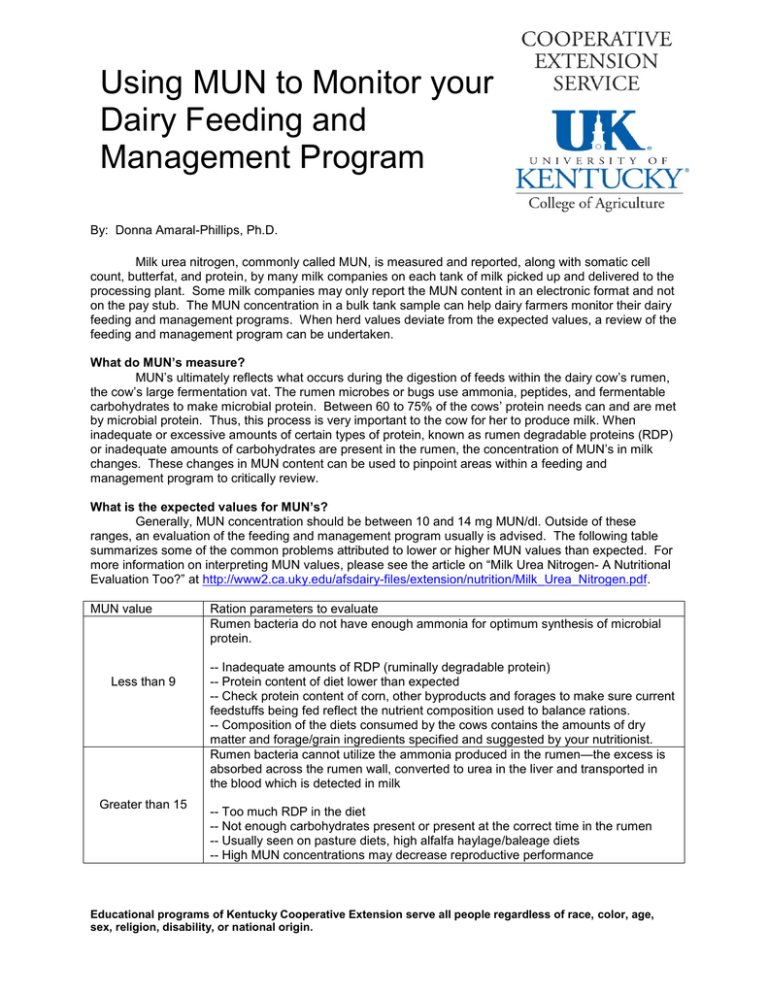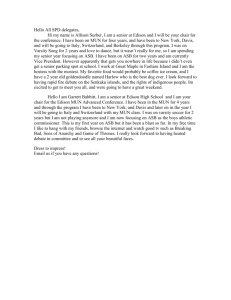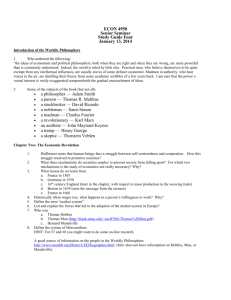Using MUN to Monitor your Dairy Feeding and Management Program
advertisement

Using MUN to Monitor your Dairy Feeding and Management Program By: Donna Amaral-Phillips, Ph.D. Milk urea nitrogen, commonly called MUN, is measured and reported, along with somatic cell count, butterfat, and protein, by many milk companies on each tank of milk picked up and delivered to the processing plant. Some milk companies may only report the MUN content in an electronic format and not on the pay stub. The MUN concentration in a bulk tank sample can help dairy farmers monitor their dairy feeding and management programs. When herd values deviate from the expected values, a review of the feeding and management program can be undertaken. What do MUN’s measure? MUN’s ultimately reflects what occurs during the digestion of feeds within the dairy cow’s rumen, the cow’s large fermentation vat. The rumen microbes or bugs use ammonia, peptides, and fermentable carbohydrates to make microbial protein. Between 60 to 75% of the cows’ protein needs can and are met by microbial protein. Thus, this process is very important to the cow for her to produce milk. When inadequate or excessive amounts of certain types of protein, known as rumen degradable proteins (RDP) or inadequate amounts of carbohydrates are present in the rumen, the concentration of MUN’s in milk changes. These changes in MUN content can be used to pinpoint areas within a feeding and management program to critically review. What is the expected values for MUN’s? Generally, MUN concentration should be between 10 and 14 mg MUN/dl. Outside of these ranges, an evaluation of the feeding and management program usually is advised. The following table summarizes some of the common problems attributed to lower or higher MUN values than expected. For more information on interpreting MUN values, please see the article on “Milk Urea Nitrogen- A Nutritional Evaluation Too?” at http://www2.ca.uky.edu/afsdairy-files/extension/nutrition/Milk_Urea_Nitrogen.pdf. MUN value Less than 9 Greater than 15 Ration parameters to evaluate Rumen bacteria do not have enough ammonia for optimum synthesis of microbial protein. -- Inadequate amounts of RDP (ruminally degradable protein) -- Protein content of diet lower than expected -- Check protein content of corn, other byproducts and forages to make sure current feedstuffs being fed reflect the nutrient composition used to balance rations. -- Composition of the diets consumed by the cows contains the amounts of dry matter and forage/grain ingredients specified and suggested by your nutritionist. Rumen bacteria cannot utilize the ammonia produced in the rumen—the excess is absorbed across the rumen wall, converted to urea in the liver and transported in the blood which is detected in milk -- Too much RDP in the diet -- Not enough carbohydrates present or present at the correct time in the rumen -- Usually seen on pasture diets, high alfalfa haylage/baleage diets -- High MUN concentrations may decrease reproductive performance Educational programs of Kentucky Cooperative Extension serve all people regardless of race, color, age, sex, religion, disability, or national origin.





